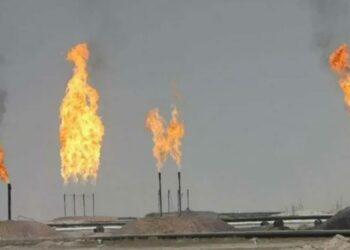The Happiness Index was first created by Global Happiness Council, a group of independent academic happiness specialists. This group of people has released World Happiness Report (WHR) every year since 2012.
It’s an indexation of happiness based on survey results that was first used in 2012 World Happiness Report. In survey, the respondents were asked to rate their happiness on a scale from 0 to 10. The Happiness Index is calculated by averaging the survey results of the respondents. The definition of the Happiness Index originates from the Bhutanese Gross National Happiness Index. In 1972, Bhutan started prioritizing happiness over other factors such as wealth, comfort and economic growth. They created an indexation for happiness based on multiple measurable factors, and have kept track of this index ever since.
The 2018 World Happiness Report defines the Happiness Index (Life ladder) as follows: Please imagine a ladder, with steps numbered from 0 at the bottom to 10 at the top. The top of the ladder represents the best possible life for you and the bottom of the ladder represents the worst possible life for you. On which step of the ladder would you say you personally feel you stand at this time?
The World Happiness Report sources its data from the Gallup World Poll. Gallup the organization behind this enormous poll interviews approximately 1,000 residents per country each year. Gallup interviews these people in over 150 countries around the world. These people are randomly selected, as long as they are registered civilians of the country (non-institutionalized) and aged 15 and older. Each respondent in this happiness survey is asked the same questions in his or her own language to produce statistically comparable results. This enormous amount of data is used by the Global Happiness Council in combination with other data sources to construct the World Happiness Report.
The World Happiness Report is a survey of the state of global happiness that ranks 149 countries by how happy their citizens think themselves to be. The countries are ranked on the basis of questions from the Gallup World Poll. The results are then correlated with other factors, including GDP and social security. There are also various domains of happiness index which are as satisfaction with life (the Cantril Ladder is an instrument to measure your satisfaction with life), psychological wellbeing (your mental health is as important as your physical health), physical health (physical fitness is the first requisite of happiness), time balance, lifelong learning, arts and culture (having opportunities to learn and do what you love is an important factor that contributes to your happiness), community (connection with others of our kind is a basic survival need), social support (the feeling of being cared for and loved is a basic requisite for the survival of humans), environment (the dirtier the feet, the happier the heart), government (it is the responsibility of the government to secure and protect people’s opportunities to be happy), standard of living (if people are not happy, economic prosperity is of little use), work (whatever your work, feeling a sense of responsibility and having a passion for what you do makes your work life interesting), levels of corruption.
One of the authors of the report John Helliwell in a statement said, “The happiest countries are those ‘where people feel a sense of belonging’, where they trust and enjoy each other and their shared institutions. There is also more resilience, because shared trust reduces the burden of hardships, and thereby lessens the inequality of well-being”.
Finland has been ranked as the world’s happiest country for the fourth consecutive year followed by Iceland, Denmark, Switzerland, the Netherlands, Sweden, Germany and Norway. Pakistan is at 121 on the happiness index while India is far below at 136. Bangladesh is on 101st and China on 84th, according to the report. People in war-ravaged Afghanistan are the unhappy, followed by Zimbabwe (148), Rwanda (147), Botswana (146) and Lesotho (145).
This year, it also used data from social media to compare people’s emotions before and during the COVID-19 pandemic. The authors found “strong increases in anxiety and sadness” in 18 countries but a fall in feelings of anger.
People in major Pakistani cities are not particularly happy.
For example, Karachi ranks 117th and Lahore 122nd among 186 cities in the world. However, Pakistani cities still report greater happiness than Indian capital of New Delhi at 180 and Sri Lankan Colombo 170. Kathmandu ranks higher at 105. Unlike inflation and economic growth rates, happiness is hard to measure. It is commonly believed that material well-being is a pre-condition for being. But it has been found that many poor persons are happy, while many rich people are miserable. In a wider sense, happiness is a state of mind borne out of many complex factors.
Factors counted in the world happiness index shows Pakistan has performed better in GDP (263.7 billion USD (2020), 280.00 billion USD (2021). In the long-term, Pakistan GDP is projected to trend around 292.00 USD Billion in 2022 and 310.00 USD Billion in 2023), life expectancy level, (the current life expectancy for Pakistan in 2022 is 67.64 years, a 0.23% increase from 2021. The life expectancy for Pakistan in 2021 was 67.48 years, a 0.23% increase from 2020. The life expectancy for Pakistan in 2020 was 67.33 years, a 0.23% increase from 2019).
According to a report by the Stanford Social Innovation Review, Pakistan contributes more than 1% of its GDP to charity, placing it among “far wealthier countries like the United Kingdom (1.3%) and Canada (1.2%) and around twice what India gives relative to GDP” and a found that 98% of Pakistanis give to charity, social protection programs ($603 million Asian Development Bank (ADB) program to support Ehsaas Social Protection and Poverty Reduction Strategy in Pakistan, Ehsaas Emergency Cash (12 million families; 12,000 per family, total budget Rs. 144 billion), Prime Minister has raised the six-monthly stipend amount of Kafaalat from Rs.12, 000 to Rs.14, 000, and perception of corruption (Pakistan’s rank has fallen 16 places to 140 from 124 out of 180 countries, Transparency International’s report showed Tuesday. In CPI 2021, Pakistan scored 28 out of 100).
“Due to several economic measures of PTI government, our current account deficit has reduced to just 545 million dollars that was more than 20 billion dollars before we came into power. The country’s imports are decreasing while exports including services exports have increased manifold besides large scale manufacturing also witnessing 8.2% growth. The overall growth rate of the country will be above five at the end of current fiscal year. Previously, a cost of living index highlighting how Pakistan is least costly among 139 countries globally. The cost of living index graph showing Pakistan as the least costly country, ranking last out of 139 countries being assessed for their living expenses.
Rezwan Ullah, Beijing Institute of Technology, also contributed to this article.



























